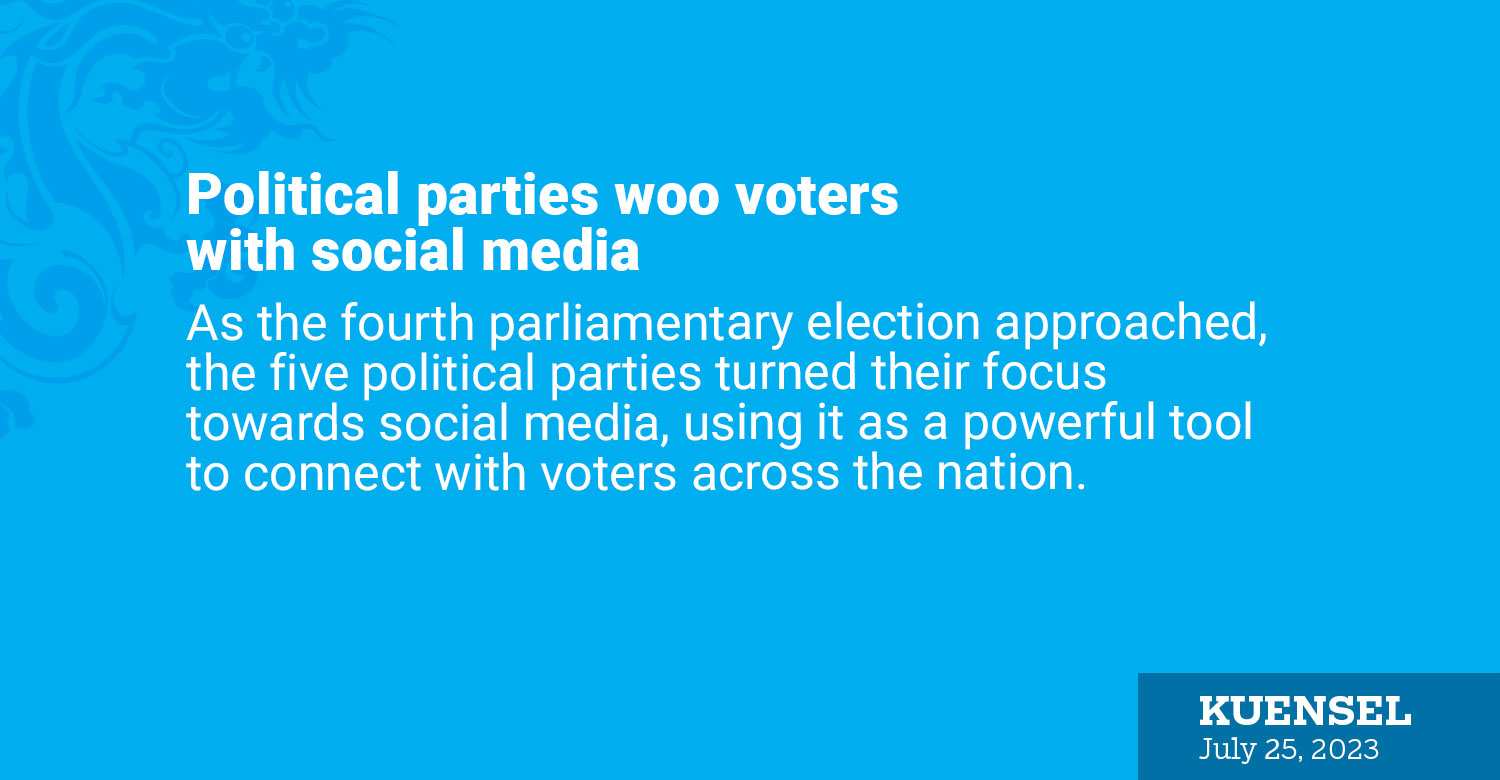Jigmi Wangdi
As the fourth parliamentary election approached, the five political parties turned their focus towards social media, using it as a powerful tool to connect with voters across the nation.
On various social media platforms, party leaders took to sharing their experiences during familiarisation tours with their supporters through a blend of pictures, videos, and music.
Tshering Tobgay of the People’s Democratic Party, for instance, shared captivating videos of his travels through rough terrain, riding a bulldozer on precarious roads, and even a lighthearted moment of him milking a cow.
The Druk Thuendrel Tshogpa, opted for the trendy platform TikTok to introduce their party to voters through songs and dances, with party Leader Kinga Tshering himself taking part in the lively performances.
Representing Druk Nyamrup Tshogpa, Sonam Kinga embarked on tours around the country, and during a public consultation, he shared pictures of himself wearing glasses with three lenses, symbolising the need for a “three-eyed perspective on governance.”
Bhutan Tendrel Party also made extensive use of social media by sharing numerous pictures of their familiarisation tour, often featuring attendees receiving kadar, while videos captured moments of Party Leader Pema Chewang being warmly greeted by supporters.
However, Druk Phuensum Tshogpa seemed less active than the other parties on popular platforms like Facebook.
Apart from Facebook and other well-known platforms, the parties wisely leveraged messaging apps such as Telegram. They created group chats, fostering constant conversations among members, with some groups amassing more than 15,000 members.
Voters lauded this shift towards social media, seeing it as a forward-thinking approach to promote the parties. One voter expressed appreciation, stating that they no longer needed to rely solely on traditional news outlets like BBS to keep track of the parties’ activities as everything was readily shared on social media.
Another said that the political parties are making good use of the digital world. “As long as social media isn’t misused, I think it is only right to make good use of it.”
A woman acknowledged the practicality of social media, particularly for those who couldn’t attend in-person campaigning or familiarisation tours due to geographical constraints. “But with social media, we know what each party stands for and I can make a choice based on that.”
Another eligible voter highlighted the significance of promoting party logos on social media, especially when reaching out to less educated citizens. The logo acted as a symbolic identifier, helping these voters connect the party to its leader.
Another voter shared similar sentiments. “The primary round is all about the numbers and not the seats. Social media played a pivotal role in introducing the party leaders to the public. People generally vote for the leader during this round.”
Many eligible voters said that it was appropriate for party members to share their manifestos and pledges via social media.


